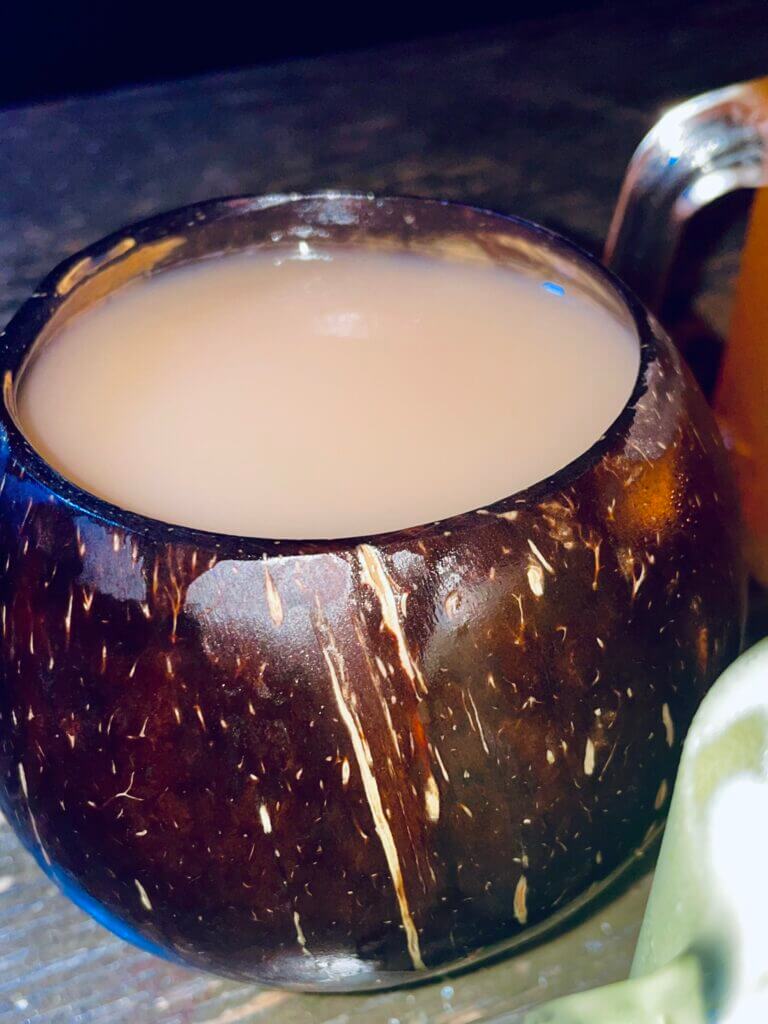Tea for pain relief. Herbs for pain.

In the quest for relief from pain, nature has provided an array of remedies in the form of herbs and teas. Across cultures and continents, traditional medicinal practices have long embraced the healing properties of various plants to alleviate discomfort and promote well-being. From the soothing warmth of chamomile to the invigorating power of ginger, let’s embark on a journey through the diverse world of pain-relieving herbs and teas.
Chamomile Tea & Pain Relief:
Originating from Europe, North Africa, and some parts of Asia, chamomile is renowned for its calming properties. It contains compounds like apigenin, which possess anti-inflammatory and muscle-relaxing effects. Chamomile tea is often recommended for relieving tension headaches, menstrual cramps, and general muscle soreness. Its gentle aroma and mild flavor make it a popular choice for unwinding after a stressful day.
Ginger Tea & Pain Management:
Hailing from Southeast Asia, ginger has a long history of medicinal use, particularly in traditional Chinese and Ayurvedic medicine. The active compound in ginger, gingerol, exhibits potent anti-inflammatory and analgesic properties, making it effective for alleviating various types of pain, including arthritis, migraines, and menstrual cramps. Ginger tea, brewed from fresh ginger root or ginger powder, provides a warming sensation that can soothe sore muscles and ease digestive discomfort.
Turmeric Tea for Pain Relief:
Native to South Asia, turmeric is revered for its vibrant color and potent medicinal properties. Curcumin, the main active ingredient in turmeric, is a powerful anti-inflammatory agent that can help reduce pain and swelling associated with conditions like arthritis and joint stiffness. Turmeric tea, often combined with black pepper to enhance absorption, offers a convenient way to incorporate this golden spice into your daily routine for pain relief and overall wellness.

Peppermint Tea for Pain and Circulation:
With its refreshing aroma and cooling sensation, peppermint has been used for centuries to alleviate a variety of ailments, including headaches, muscle pain, and digestive issues. The menthol found in peppermint provides a numbing effect that can help ease discomfort and promote relaxation. Peppermint tea is a popular choice for soothing headaches and migraines, as well as relieving tension in the muscles of the digestive tract, making it an excellent option for individuals with irritable bowel syndrome (IBS) or indigestion.
Valerian Root Tea for Pain and Relaxation:
Originating from Europe and Asia, valerian root has been valued for its sedative and pain-relieving properties since ancient times. It contains compounds like valerenic acid and valerone, which act on the nervous system to promote relaxation and reduce muscle tension. Valerian tea is often used to alleviate tension headaches, menstrual cramps, and insomnia, providing natural relief without the grogginess associated with some over-the-counter medications.
White Willow Bark for natural pain relief:
Derived from the bark of the white willow tree, native to Europe and Asia, white willow bark has been used for centuries as a natural pain reliever. It contains salicin, a compound similar to aspirin, which exhibits anti-inflammatory and analgesic effects. White willow bark tea is commonly used to alleviate joint pain, muscle aches, and headaches, offering a gentle alternative to conventional pain medications.
Lavender Tea for Pain:
Known for its calming aroma and soothing properties, lavender has been used in herbal medicine for centuries to promote relaxation and relieve pain. It contains compounds like linalool and linalyl acetate, which have analgesic and anti-inflammatory effects. Lavender tea is often recommended for reducing tension headaches, muscle soreness, and stress-related discomfort, helping to restore balance to the body and mind.
Kratom Tea for Pain and Anxiety and withdrawal:
Originating from Southeast Asia, kratom has gained popularity in recent years for its potential analgesic effects. Mitragynine and 7-hydroxymitragynine, the active compounds in kratom, interact with opioid receptors in the brain to produce pain-relieving and mood-enhancing effects. Kratom tea is often brewed from the dried leaves of the Mitragyna speciosa tree and has been used traditionally by indigenous communities to alleviate chronic pain, arthritis, and fibromyalgia. However, it’s essential to use kratom responsibly and be aware of potential side effects and interactions with other medications.

Kava Tea for Pain and Muscle Relaxation:
Native to the South Pacific islands, kava has been revered for centuries for its calming and euphoric properties. Kavalactones, the primary active compounds in kava root, exert anxiolytic and muscle-relaxing effects, making it a popular choice for promoting relaxation and stress relief. Kava tea, made from the ground root of the Piper methysticum plant, is often consumed during social gatherings and ceremonies in Pacific Island cultures. It is believed to help alleviate anxiety, promote better sleep, and relieve tension-related pain. However, it’s essential to consume kava responsibly and be aware of potential liver-related risks associated with long-term or excessive use.
From the verdant fields of Europe to the lush landscapes of Asia, the world is rich with a diverse array of herbs and teas that offer natural relief from pain. Whether it’s the delicate petals of chamomile or the fiery warmth of ginger, each botanical remedy carries with it a unique blend of healing properties passed down through generations. By incorporating these time-honored traditions into our modern lives, we can tap into the power of nature to nurture our bodies and soothe our souls. So the next time you’re seeking relief from pain, consider reaching for a cup of herbal tea and let the healing embrace of nature work its magic.
USE CODE BLOG24 to get 20% Off Your Order and a Free Gift!
